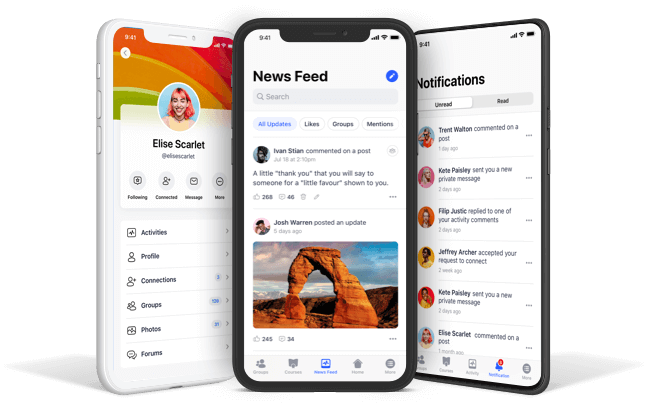Companies all over are singing the praises of mobile learning for employee training and ongoing education.
The problem is, if you are a human resources or employee training manager, you quickly see those companies are often – surprise – mobile learning businesses trying to sell you on their program.
That’s not necessarily useful when you are the individual making dollars-and-cents decisions about how to keep your employees well-trained and working at maximum efficiency.
How do you know offering mobile learning for employee training is going to save you money, keep your people happy, and ensure everyone works smarter, not harder?
You need to separate the buzz and hype from the hard facts, and there is no better way to do that than looking at actual case studies of mobile learning in a corporate setting.
To that end, we’ve got two killer case studies conducted with non-educational staff at a university.
The findings of both studies provides you with hard evidence regarding the effectiveness of mobile learning without the marketing and advertising noise.
Check out what we’ve got for you.

Case Study One: IT Employees Using Mobile Learning
Overview:
This case study involved a sample group of IT professionals who participated in a mobile learning class for a total of 15 hours over two weeks.
There were only two face-to-face meetings in the study: one at the beginning, and one at the end.
Learning materials and mobile devices were provided at the start of the study, and all work and assignments took place via mobile and desktop computers over the course of the study.
There were also daily text based group chats held every afternoon for the purpose of “pulse checks”, collecting feedback, and for members of the cohort to communicate about assignments.
Findings

Despite some initial frustration with the speed of the group chat app and the limited capabilities of the mobile devices versus traditional desktop e-learning, the study revealed several salient and meaningful data points for those considering changing their approach to mobile learning:
- Learning and working collaboratively via email and text chat took getting used to, but once participants had some practice using these methods they found them far more convenient than blocking out a time for everyone to meet and contribute to group work. This also cut down on the time and expense of having participants travel to one location for a meeting outside of regular business hours.
- The ability to multi-task was much praised by participants, as they could use “dead time” on the job to complete training and participate in training activities. This also meant they could train while on the clock and had no need of additional paid time to complete training.
- Possibly the most popular benefit of mobile learning was that participants had the ability to go or be anywhere while still participating in the learning process on their own timetable. Not being bound by the traditional norms of a classroom setting meant they were able to complete assigned IT work during the day while actively participating in class during their off hours or lunch breaks. That freedom meant a great deal more to them and gave far greater satisfaction than being forced to attend mandatory training at an outside location.
Case Study 2: Social Science Department Administrative Assistants

Overview
Rather than IT professionals, this case study focused on a different group of administrative assistants with a larger sample size.
Instead of two weeks, this case study took place over three and involved 30 hours of activity rather than 20.
Additionally, participants had face to face meetings twice each week, and completed all other work via mobile device (no desktop access this time).
The extended time period, more flexible planning, and more frequent face-to-face meetings were intended to provide additional support for participants given this case study would only use mobile devices.
Additionally, the participants were selected due to their lack of IT experience to gauge the experience of the “common” mobile learning user who did not work with mobile devices in a professional capacity.
Like the first case study, this study also focused on collaborative learning and project creation via mobile device.
Findings

As this study was different from the initial study with IT professionals, there were additional data points that gave researchers plenty to discuss regarding mobile learning and its benefits and limitations. Here’s a summary of those findings:
- Despite the freedom to work with the mobile device for learning and collaboration, many participants expressed they had difficulty finding the time to complete assignments and participate in the learning experience due to the demands of their other responsibilities not related to the study. There was a decided gap between what participants expected they would do versus what they were actually able to complete.
- Participants in this study made far more use of the learning diary app than any other app, and recorded more information relevant to assignments in it than participants in the other study. Recording ideas and drafting potential responses/projects via mobile were the two most common types of entries.
- Many participants eschewed text-based chat for voice chat as the consensus was that discussions via voice were easier for everyone to conceptualize and execute. Participants complained that text based discussions were too slow and required extended waiting for reading and writing responses.
Bottom Line: What Do These Case Studies Teach Us?

The consensus from both case studies was that mobile learning provides superior options and convenience for employee training, though some may still need to work on their time management when using mobile learning.
Additionally, mobile learning was preferred from a cost effectiveness standpoint as there was no need to pay employees for transport costs or hours worked during mobile training.
Most employees preferred to use “dead time” to complete these assignments while on the clock, or multi-task to complete training so it did not cut into their unpaid personal time.
Most important of all though, all participants in both case studies agreed that training was far more memorable and effective when they were participating via mobile on collaborative learning experiences rather than in a traditional classroom setting.
The research clearly indicates there are multiple advantages and benefits for employers, employees, and the level of service/productivity an organization can attain via implementation of mobile learning.
The time to get onboard is now, and your people and your budget will thank you for it.









